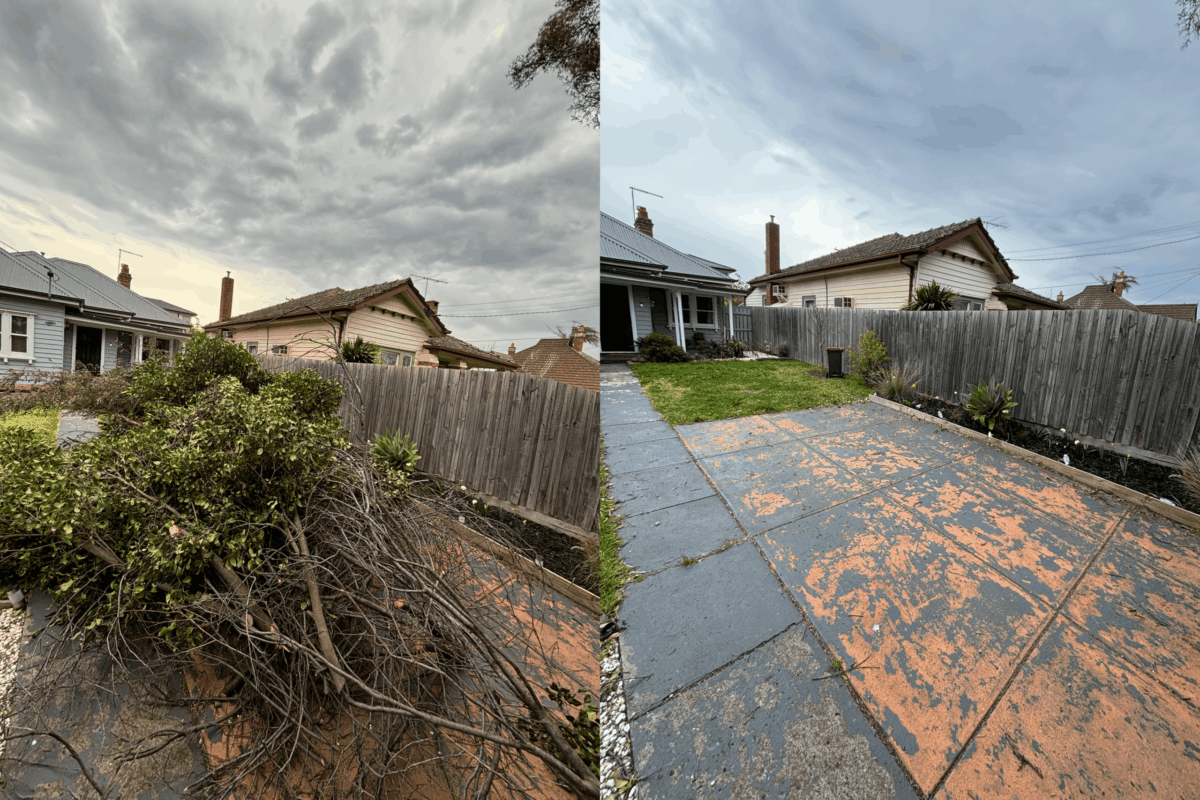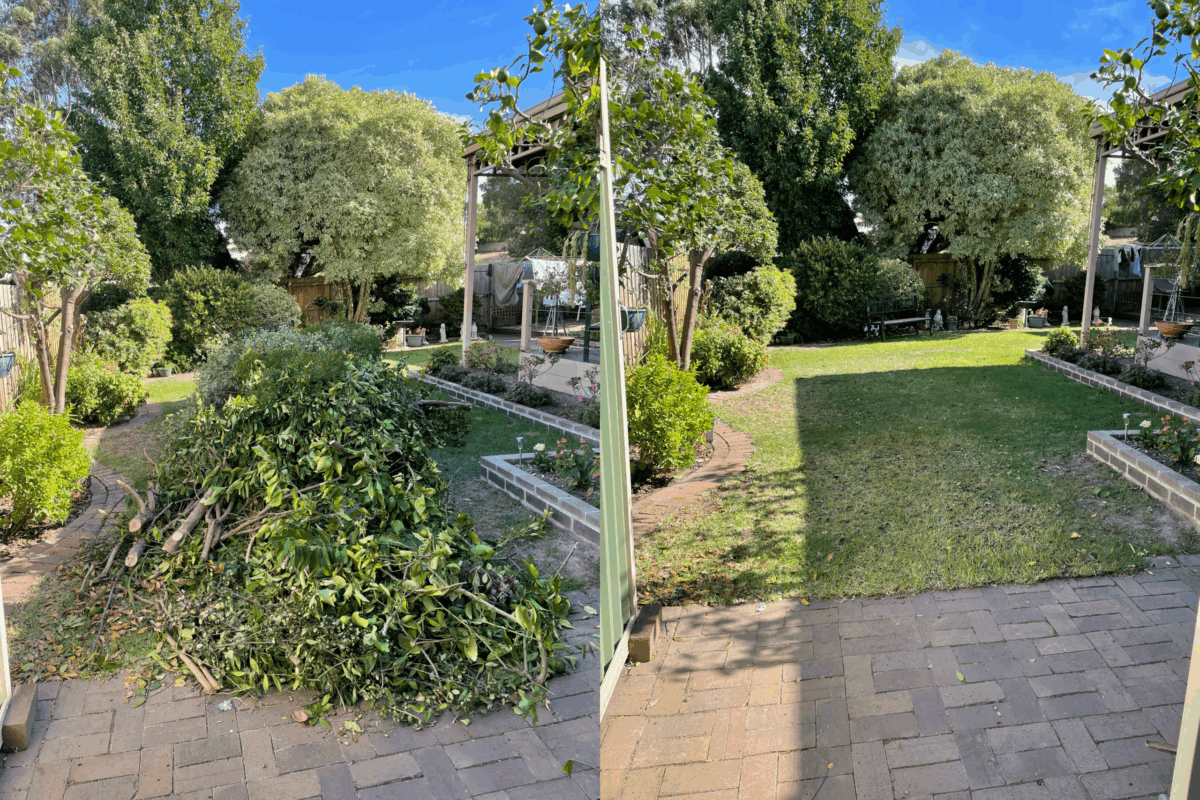For many Australians trying to live more sustainably, organic waste collection is just one part of a bigger lifestyle shift. If waste is not processed properly, it might still end up in landfill. When this happens, it releases methane and worsens the environmental problem you’re trying to solve.
So, where does your organic waste really go after your bin is emptied? And more importantly, how can that humble pile of peels, prunings, and plate scrapings become something that fuels a greener economy?
In this article, our team at Go Easy Rubbish Removal will walk you through the full journey of your organic waste, from the moment it’s collected to how it powers composting, clean energy, and sustainable agriculture.
What Counts as Organic Waste?
When we talk about organic waste, we’re referring to biodegradable materials that come from living organisms. In an Australian household context, that typically includes:
- Food scraps: vegetable peels, coffee grounds, eggshells, spoiled leftovers
- Garden waste: grass clippings, leaves, small branches, weeds
- Other natural materials: paper towels, tea bags, and untreated wood scraps (if accepted by your local system)
While organic waste does break down, it is often mistakenly perceived as harmless. But the catch is that where and how it breaks down will determine whether it becomes a valuable resource or a dangerous pollutant.
What happens to organic matter in landfills?
According to the Australian Department of Climate Change, Energy, the Environment and Water (DCCEEW), organic material makes up roughly 40–50% of the average household rubbish bin. When this waste is sent to landfill, it decomposes without oxygen (anaerobically), releasing methane, a greenhouse gas 28 times more potent than carbon dioxide over a 100-year period. This is a major contributor to Australia’s emissions profile.
On the other hand, when organic waste is properly diverted and processed through composting or anaerobic digestion, it becomes a net-positive product, restoring soil health, supporting agriculture, and even generating renewable energy.
How Organic Waste Collection Works in Australia
Australia’s approach to organic waste collection is a blend of local government programs and private-sector services, each playing a distinct role in diverting green waste from landfill.
Council-led green bin programs
Most councils provide kerbside collection for garden organics, things like grass clippings, leaves, and small branches. These typically go into a 240L green-lidded bin and are collected weekly or fortnightly.
An increasing number of councils are now rolling out FOGO (Food Organics + Garden Organics) services, which allow households to place both food organics (like vegetable scraps, coffee grounds, eggshells) and garden waste into the same bin. However, uptake is still uneven across the country.
This means a significant volume of organic material, especially food waste, still ends up in red-lidded landfill bins, where it contributes to methane emissions and squanders valuable nutrients.
How private rubbish removal providers fill in the gap
While council programs manage the bulk of residential green waste, private services like Go Easy Rubbish Removal play a crucial role in extending coverage and adding flexibility. These providers fill the gaps left by municipal systems, especially for:
- Households or businesses generating large volumes of organic waste
- Areas not yet covered by FOGO or with limited bin capacity
- Events, hospitality venues, or commercial kitchens that need regular or tailored collection
- Garden clean-ups, storm debris, or seasonal overflows that go beyond the green bin’s limit
They ensure that all organic material collected is sent to the appropriate licensed composting or bioenergy facilities, not landfills.
Where does your organic waste go?
Once your organic waste is collected, it enters a highly structured and increasingly sophisticated processing system, where it’s transformed into valuable products like compost, mulch, liquid fertiliser, or even renewable energy.
Here’s what happens next.
Step #1: Transfer to processing facilities
After collection, organic waste is transported to licensed processing facilities like South East Organics in Melbourne or EarthPower in Sydney. These may be run by councils, private operators, or through public–private partnerships. In Australia, common destinations include:
- Open-air windrow composting sites, which are used for low-risk green waste like garden clippings
- In-vessel composting facilities, which are fully enclosed, allowing for better control of moisture and temperature, ideal for food waste
- Anaerobic digestion plants, used for food-heavy waste streams and commercial organics
Step #2: Screening and contaminant removal
Before processing begins, the organic waste is carefully screened for contamination. Common contaminants include plastic bags, glass, and general rubbish, all of which must be removed to ensure quality output.
Step #3: Decomposition and conversion
Once sorted, the waste undergoes biological transformation depending on the facility type:
Composting (Aerobic)
In this method, microorganisms break down the waste material in the presence of oxygen. As the organic matter decomposes, it generates heat and steadily transforms into a stable, nutrient-rich substance.
The whole process usually takes between six to twelve weeks. The end product is high-quality compost or mulch that can be used across a variety of applications. This includes restoring soil health in agriculture, improving landscaping projects, or rehabilitating damaged land.
Anaerobic Digestion (AD)
Unlike composting, this process takes place in sealed, oxygen-free digesters where specific microbes feed on the organic material.
As these microbes break down the waste, they produce biogas, a renewable energy source made up of methane and carbon dioxide. This biogas can be captured and used to generate electricity, produce heat, or even power vehicles. At the same time, the process creates a nutrient-dense by-product often called digestate, a sludge-like substance that is refined into liquid fertiliser or soil conditioner.
Step #4: Distribution and use
The end products of these processes go back into the economy and environment as compost, mulch, biogas, or liquid fertilisers. These support crop growth, urban tree planting, and even renewable energy targets all over the country.
How We All Make a Difference
Australia’s organic waste recovery system can only succeed with active participation from individuals, businesses, and service providers. Infrastructure and policy matter, but so does how everyday Australians manage their waste.
Even simple actions like composting food scraps or using the right bin can make a measurable impact. In fact, if half of Australia’s food waste were diverted from landfill, it could prevent approximately 8 to 9 million tonnes of CO₂-equivalent emissions annually, a meaningful contribution to the nation’s climate targets.
However, contamination is still a major issue. Plastics, packaging, and recyclables in green bins can disrupt processing and lower compost quality. This highlights the importance of both participation and proper sorting.
This is where rubbish removal services like Go Easy help fill the gaps. In areas without FOGO or for businesses with high waste volumes, we provide:
- Flexible pickup options for organic waste
- Guidance on contamination prevention
- Direct delivery to licensed composting and digestion facilities
Take Proper Action with Your Organic Waste
Every banana peel, coffee ground, and garden clipping has the potential to contribute to a greener, circular economy, but only if it’s managed properly. By understanding what happens after your organic waste bin is emptied, you’re taking a step toward climate action, resource recovery, and long-term sustainability.
At Go Easy Rubbish Removal, we make it simple for households and businesses to do their part. Our green waste collection services in Australia are designed to support eco-conscious living without the hassle. From prompt pickups to ethical disposal, we’re here to help you make waste work for the planet.
Book your organic waste collection with Go Easy today!





